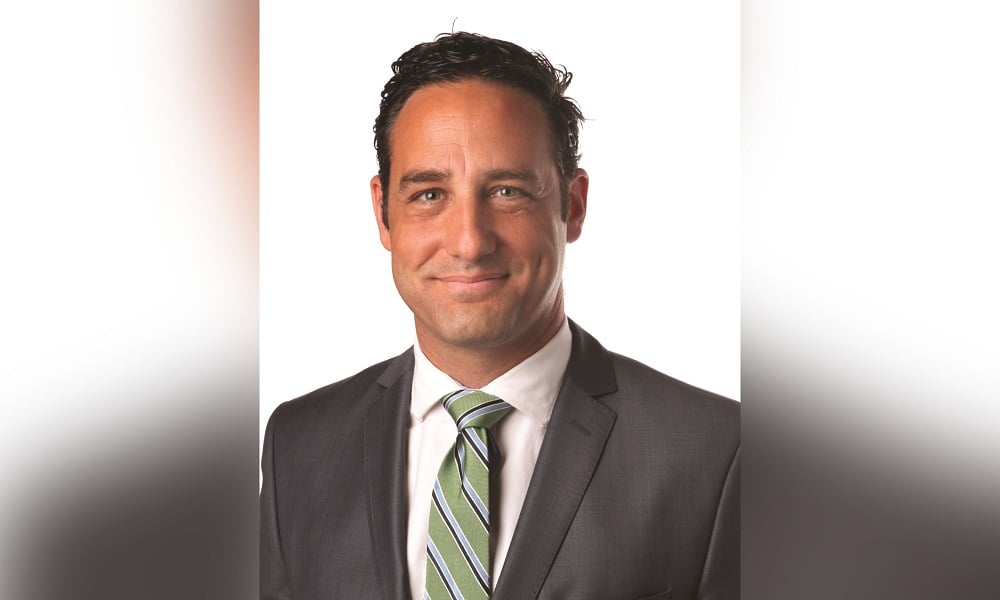Property expert weighs in on the housing bubble debate

While APRA’s increase to the serviceability buffer banks use when assessing loan applications will impact borrowers on the margins, the 15,500 property markets in Australia are not likely to slow down, according to broker and buyer’s agent John Manciameli of Hunterwood Solutions (pictured).
He told MPA that since the measures only represent a 5% reduction in borrowing power for the typical borrower, the impact would not be too significant.
“We all have to remember that for four out of five borrowers, these changes won’t affect them,” he said. “We’re looking at the margins of things. It’s those people in Sydney and Melbourne on average incomes that were buying the $1.3 million property for the first time - it’s really going to affect them.”
He said it could also affect borrowers in the upper echelons of society in suburbs such as Toorak in Melbourne, where there are a lot of highly leveraged borrowers.
“It’s both ends of the spectrum,” he said. “What I’m more concerned about is there hasn’t been the really intelligent segregation around curving the high DTI lending and refinances. There is that sub area where we are creating the so-called mortgage prisoners who would be better off refinancing and can’t. Then you think about the people who bought off the plan using a pre-approval and they’re no longer going to work.”
Read more: Mortgage broking industry divided on APRA change
While predicting the demise of the Australian property market has become almost as popular as property itself in recent years, Manciameli said there were no signs of the “property bubble” bursting. The first reason for this is that the market in Australia is not actually a bubble, he said.
“This is an owner occupier boom - it’s not a bubble, led by owners and people upgrading,” he said. “It’s not investors yet.”
He said the proportion of investor lending was nowhere near the level it reached when APRA introduced previous macroprudential measures about eight years ago.
“History shows that owner-occupier booms generally last for three years and we’re one year into a three-year boom,” he said.
The other reason the APRA change won’t hold back the market is because there will be more listings coming out of lockdown. Coupled with the pipeline of pre-approvals already in place, the added confidence will have a positive impact on activity, he said.
“The property market will remain really healthy,” he said. “That’s my take on it from what I’m hearing on the ground.”
Last weekend, every capital city in Australia hit 80% auction clearance rates for the first time as buyer demand kept pace with an increase in listings. While there has been some speculation around the relationship between buyers rushing to fast track their purchases before the increase in serviceability measure comes into effect next month, Manciameli said this was probably not the reason behind the activity.
“There is a positive correlation coefficient between pre-approvals and prices and the Australian banking system has an enormous amount of pre-approvals waiting to be converted,” he said. “As soon as listings start to improve – you’re seeing it now, everything’s starting to be snapped up because everyone’s been sitting there just waiting to buy something. Four out of those five aren’t affected by the APRA changes. They’re not borrowing six times their income, so I think it’s FOMO more than anything else.”
He said it was impossible to generalise in terms of what would happen to property prices given there is no one Australian property market. Rather, there are 15,500 separate markets and around 70-80% of capital growth occurs in a suburb-level dynamic.
“If you want to stick to a capital city level, there is no question there will be a slowdown in the rate of growth in Melbourne and Sydney,” he said. “There’s not going to be a decline.”
He said prices wouldn’t start to decline until interest rates went up – something he expected the banks to move independently on ahead of the cash rate moving.
“Securitisation rates will force banks to pass on costs,” he said. “This is where the astute brokers will come in and educate their clients.”
Read next: Non-bank predicts lending boom in run-up to Christmas
He said capital growth in certain regions would remain strong, despite growth in Sydney and Melbourne slowing.
“There’s no question Brisbane, Adelaide and Perth are on their way to be the standout performers,” he said. “If you look at Brisbane, incomes are on par with Melbourne, so it’s easy to see the average price of a standalone house move from $614,000 in June this year to $700,000 by December. That same house is easily $1 million in Sydney, and they’re on the same income, more or less, as Melbourne - in fact they earn a little bit more in Brissie.
“The other thing people forget is the regional areas. I fully expect them to outperform capital cities. If you witness the capital growth of suburbs in Tasmania, or Newcastle or the Gold Coast, or regional Victoria or NSW, it’s amazing.”
He pointed to the regional NSW town of Cooma which experienced around 60% growth in less than a year.
“When people talk about property markets and prices, it’s such an amazing country, we have so much opportunity in so many different markets that you don’t have to invest in Melbourne and Sydney,” he said. “This need to buy near an inner-city CBD for capital growth has proved to be a complete myth.”



